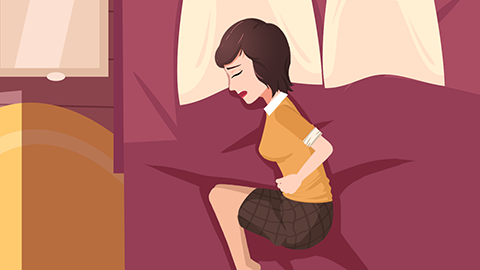Why does the lower back ache during menstruation, and what can be done about it?
Generally speaking, "da ma" refers to menstruation. Aching pain in the lower back during menstruation may be related to factors such as hormonal fluctuations, localized cold exposure, pelvic congestion, lumbar muscle strain, or pelvic inflammatory disease. If discomfort occurs, it is recommended to seek medical attention promptly and receive symptomatic treatment under the guidance of a physician. Detailed explanations are as follows:

1. Hormonal Fluctuations
During menstruation, hormonal levels in women fluctuate, which may cause tension and pain in the lower back muscles. In such cases, applying heat or massaging the lower back can help relieve the pain.
2. Localized Cold Exposure
If the lower back is exposed to cold temperatures during menstruation due to inadequate warmth, it may cause pain and discomfort in the local tissues. It is recommended to apply a warm towel or a hot water bottle to the lower back to improve local blood circulation and alleviate pain.
3. Pelvic Congestion
During menstruation, pelvic congestion occurs to facilitate the shedding of the uterine lining. This may compress or stretch the muscles and ligaments in the lower back, causing aching pain. It is advisable to rest appropriately and avoid prolonged standing or sitting, which can help improve blood circulation and relieve pain.
4. Lumbar Muscle Strain
Lumbar muscle strain is caused by chronic inflammatory damage to the lower back muscles. During menstruation, women may develop lumbar strain due to prolonged standing, sitting, or engaging in strenuous exercise, which can lead to lower back pain. It is often accompanied by mild spinal curvature and osteoporotic changes. Treatment may include medications such as celecoxib capsules, compound chlorzoxazone tablets, or Wujin Huaxue Zhitong capsules, as directed by a physician.
5. Pelvic Inflammatory Disease
Pelvic inflammatory disease is caused by bacterial infection or other factors. The inflammation may irritate nerves and tissues in the pelvis, resulting in aching pain in the lower back. It is usually accompanied by symptoms such as prolonged menstrual periods, frequent urination, and abdominal distension. Treatment may include medications such as Qianjin Zhidai Pills, Fuke Qianjin Tablets, or metronidazole tablets, as directed by a physician.
Maintaining healthy lifestyle habits, regular作息 (作息 should be translated here, but it seems incomplete in the original text), a balanced diet, and avoiding excessive intake of cold or irritating foods are beneficial to overall health.




